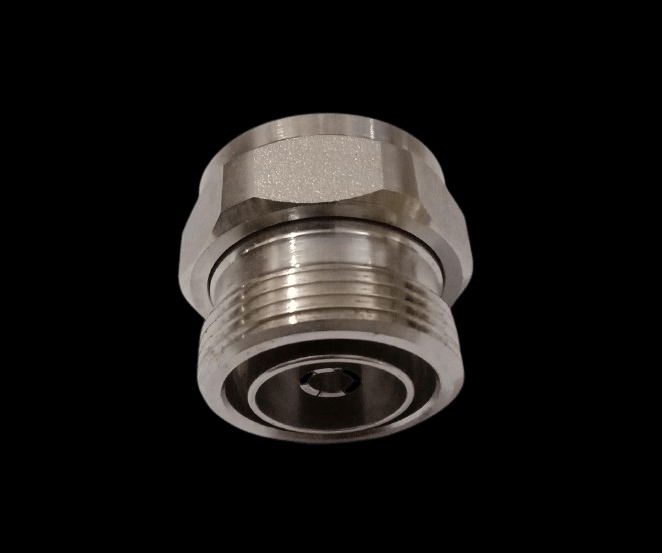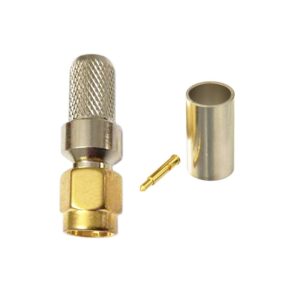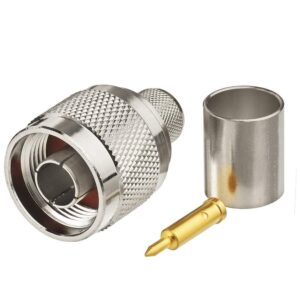- Connector Types:
- DIN Male:
- Connector Type: DIN (Deutsches Institut für Normung)
- Gender: Male (with a central pin and surrounding shield)
- DIN Female:
- Connector Type: DIN
- Gender: Female (with a central socket and surrounding shield)
- DIN Male:
- Frequency Range:
- Up to 7.5 GHz: The adapter is engineered to work efficiently at frequencies up to 7.5 gigahertz, suitable for high-frequency RF applications.
- Impedance:
- Typically 50 Ohms:
- DIN Connectors: Often 50 ohms, used in RF applications. Ensuring impedance matching between the adapter and your equipment is crucial to prevent signal reflection and loss.
- Typically 50 Ohms:
- Mechanical Construction:
- Material: Usually made from high-quality metals such as brass or stainless steel, often with nickel or gold plating to enhance conductivity and resist corrosion.
- Design: Designed to provide a reliable and secure connection between DIN Male and DIN Female connectors, maintaining signal integrity.
- Applications:
- RF Testing: Connecting RF equipment or devices with DIN connectors in test setups.
- Communication Systems: Bridging connections between devices or cables with DIN connectors.
- Microwave Systems: Connecting components in high-frequency systems.
- General RF Applications: Where a transition or extension between DIN Male and DIN Female connectors is needed.
- Typical Features:
- Low Signal Loss: Designed to minimize signal degradation and ensure efficient signal transfer between connectors.
- Durability: Built to handle frequent connections and disconnections, providing long-term reliability.
Usage Tips:
- Confirm Impedance Matching: Ensure that the adapter’s impedance (typically 50 ohms) matches that of your equipment to avoid signal issues and reflections.
- Check Frequency Range: Ensure the adapter’s frequency range (up to 7.5 GHz) meets the requirements of your application. For applications requiring higher frequencies, consider an adapter with a higher frequency rating.
- Ensure Secure Connections: Properly connect the DIN Male plug to the DIN Female socket to avoid loose connections that could lead to signal problems.
- Inspect Regularly: Periodically check the adapter for wear or damage to ensure continued optimal performance.
This DIN Male to DIN Female adapter is a useful component for connecting or transitioning between DIN connectors, making it suitable for RF testing, communication systems, and other high-frequency applications where DIN connectors are used.




